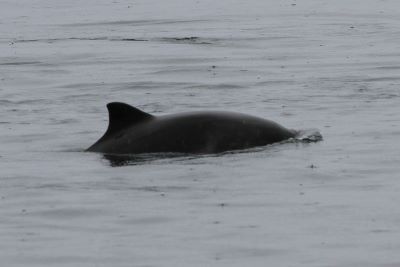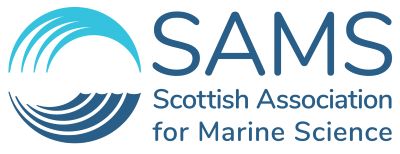Progressing harbour porpoise conservation research: optimising vessel-based and static data collection and analyses for offshore renewables and Marine Protected Area monitoring


Scotland’s Government is increasingly seeking to develop sustainable energy resources, with numerous proposed marine renewable energy projects. Sustainable development of these projects requires monitoring programmes that deliver robust up-to-date information to assess potential impacts at appropriate spatio-temporal scales.
NatureScot is currently developing its monitoring strategy for the Inner Hebrides and the Minches Special Area of Conservation (IH&M SAC), established off western Scotland for the conservation of harbour porpoise (Phocoena phocoena). NatureScot’s monitoring strategy is anticipated to use vessel-based visual and towed-acoustic survey data collected by the Hebridean Whale and Dolphin Trust (HWDT), complemented by continued deployment of static acoustic recorders by the Marine Directorate, and dedicated projects to address specific data gaps.


An opportunity exists to further analytical approaches of porpoise data to optimise monitoring for this conservation-priority species. This PhD aims to:
- Analyse recent HWDT datasets to clarify spatio-temporal porpoise distribution across the IH&M SAC and western Scottish waters. Visual and passive acoustic survey data collected from 2011 onwards will be used in species distribution modelling (SDM) to obtain insights into environmental drivers underpinning spatio-temporal variability, and enable comparison between visual and passive acoustic datasets, as well as between current and historic model outcomes. This will also enable in-depth investigation of large-scale changes across the research area, as suggested by recent results.
- Explore opportunities for integrating HWDT visual and passive acoustic datasets in combined abundance estimation analysis. There has been significant recent progress in developing statistical frameworks to estimate cetacean densities by combining passive acoustic monitoring (PAM) datasets with data collected by other methods. Building on these new approaches, the student will explore opportunities for integrating visual and towed-acoustic survey data, hereby highlighting caveats, assumptions, and limitations of these approaches. The student will analyse HWDT data for the SAC area to obtain abundance estimates. If existing data prove unsuitable, the student will, e.g. through model simulations, investigate how current data collection and analytical protocols can be improved.
- Investigate noise impacts on relative porpoise presence patterns as detected by static acoustic recorders. Impacts of background noise levels on porpoise detection probability and detection ranges have received little attention to date, but understanding this effect is crucial to accurately interpret and compare static acoustic monitoring results. The student will investigate the extent to which porpoise detection rates might be affected by variability in overall soundscapes through the analyses of existing acoustic data, complemented by data from dedicated experiments.
This inter-disciplinary studentship will improve our current understanding of porpoise presence off western Scotland and substantially improve methodological approaches by 1) analysing >10 years of survey data to assess spatio-temporal distribution patterns, 2) assessing the suitability of these data in deriving abundance estimates, and obtain such estimates where appropriate, and 3) investigate the need to correct for noise conditions to improve interpretation of detection results from static PAM.
Proposed schedule:
Year 1:
- Review scientific literature on porpoise ecology and vocalisation, acoustic monitoring, and relevant statistical techniques
- Train in acoustic processing to detect porpoise echolocation; process acoustic data
- Train in methods for cetacean abundance and density estimation
- Identify appropriate statistical abundance estimation method(s); evaluate suitability of survey data for these; commence analysis
Year 2:
- Complete abundance estimation analysis and/or development of protocol recommendations allowing implementation of abundance estimation framework
- Develop species distribution modelling protocols; commence implementation of protocols to visual and acoustic data
- Design and undertake static acoustic monitoring fieldwork
Year 3:
- Finalise species distribution modelling
- Train in ambient sound analysis; apply this to acoustic data; investigate resulting patterns in porpoise presence across noise levels/thresholds/recording instruments
- Commence writing up dissertation
Year 4:
- Finish writing up
A suitable candidate should have strong quantitative skills, with proficiency in species distribution modelling and wildlife population density estimation being strong advantages. Ideally, the candidate will have some background in passive acoustic data analyses (species detection/classification; sound level).
Skills:
- Strong in statistical modelling (Essential)
- Programming (Essential)
- Passive acoustic data analyses (Desired)
- Familiar with species distribution modelling/density estimation (Desired)
- Self-motivated (Essential)
- Able to work independently and as part of a small team (Essential)
- Attention to detail (Essential)
- Good writing skills (Desired)
Experiences:
- Planning and conducting fieldwork (Useful)
Interests:
- Species conservation (Essential)
- Mobile species management (Desired)
Director of Studies: Dr Nienke van Geel
Supervisory Team: Prof Len Thomas (University of St Andrews), Dr Steven Benjamins (SAMS), Rona Sinclair (NatureScot), Dr Kate Brookes (Marine Directorate – Scottish Government) and Dr Lauren Hartny-Mills (Hebridean Whale and Dolphin Trust).
Application Deadline: Friday May 16th 2025, 17:00 BST.
Interview Date: Monday 2nd June 2025 (morning).
Course Start Date: 1st October 2025
Funding: This 3.5 year PhD studentship is fully funded by SAMS, NatureScot, and ScotMER the Offshore Wind Directorate (Scottish Government). The studentship covers Home (UK) tuition fees, a maintenance stipend and a research training grant. International applicants are also welcome to apply but please note, if the successful candidate has international fee status, they will be required to pay the difference between home and international tuition fees. Continuing students’ annual tuition fees are subject to revision annually and typically increase between 1.5-3% per annum. Scholarships may be available.
SAMS is an Academic Partner of UHI. Fees information is available here:
How to apply:
For full project information, eligibility criteria and an application form please visit the SAMS website:
Please note that we cannot consider CVs alone. Only applications submitted on the application form available from the SAMS website by the application deadline, including the correct supporting documents and with references submitted by your referees, will be considered for this project.